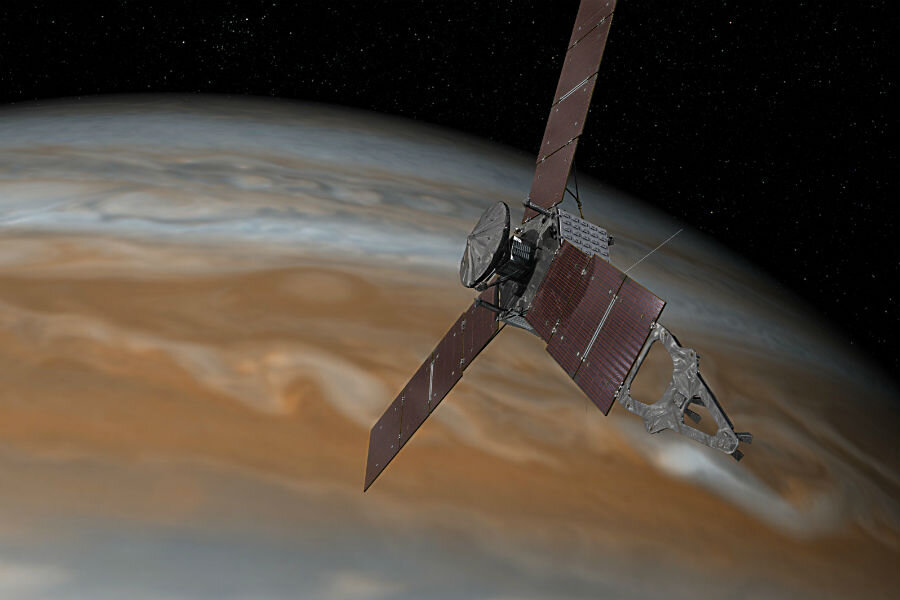NASA's Juno is about to make a bold attempt to orbit Jupiter
Loading...
"Everything about Jupiter is extreme," said Scott Bolton, the principal investigator for the Juno mission, whose spacecraft is now one week away from the giant planet's polar orbit. "It's a planet on steroids," he told Tech Times.
Jupiter, the most massive object in our solar system beside the sun, is surrounded by two enormous belts of intense radiation that make maintaining consistent orbit difficult. Thus in one week, NASA's Juno probe will approach Jupiter's atmosphere traveling at 160,000 miles per hour – a speed faster than any other previous man-made object has travelled. Upon arrival, its engines will fire for 35 minutes, just enough time to slow the spacecraft enough to drop it into a loop-like orbit around the behemoth.
In order to achieve such tremendous speed, the Juno spacecraft was initially launched from Cape Canaveral, Fla., and navigated toward the sun in order to utilize a sort of "gravitational slingshot" where the spacecraft locked into Earth's orbit as our planet looped around the sun, releasing from Earth's orbit at the precise moment and gathering speed at a rate of nearly four kilometers per second.
Based on our understanding of the manner in which our solar system developed, giant planets such as Jupiter were most likely formed first and are composed of very similar elements as the sun. A better understanding of Jupiter's composition could provide a vast array of information about the formation of our solar system, as well as related systems with their own similar giant planets. "In many ways, what we're after is the recipe for a solar system," Bolton said, according to the Press Enterprise.
Our ability to observe and monitor our universe has developed exponentially in recent history. Should the Juno Probe execute its approach maneuver correctly, the images and information provided by the mission could lead to an even greater understanding of the composition of our solar system.
By the time Juno reaches Jupiter on July 4, it will have traveled nearly 3 billion kilometers since 2011; and when its mission is complete, it will simply fall and burn up in Jupiter's atmosphere. However, that is assuming that all goes well on the incredibly difficult approach into the giant’s orbit. "It's a one-shot deal. I mean, the whole thing's riding on this JOI – Jupiter orbit insertion – activity on July 4," Mr. Bolton said in a June 16 news conference, adding, "somebody asked, 'When does the nail biting start?' It's already started."
Because of the radiation as well as the strength and variable nature of Jupiter's surrounding magnetic field, Juno will not complete a single 11-day orbit, but instead will complete one entire revolution every 14 days, allowing the team of scientists to react to any unanticipated elements to which the probe may be subjected.
The current understanding of Jupiter's atmosphere and composition comes primarily from the 1995 NASA Galileo mission, in which a probe orbited the planet until 2003, sending back images and data about the planet's make-up. However, the relayed information surprised and confused researchers.
"We had expected to see oxygen, in the form of water which contains oxygen, but saw very little," said Bolton as quoted by The Guardian, "There are two explanations for this. One is that we simply do not understand Jupiter properly at all. The alternative explanation is that we were really, really unlucky and picked the one part of the planet that had no water in it. We'd hit Jupiter's Sahara desert – through sheer bad luck."
While such a possibility is representative of the complex and challenging nature of space exploration, in the 13 years since the Galileo probe burned up in the Jovian atmosphere, incredible scientific developments in both the methods for collecting data as well as the ability to travel further distances with higher-tech equipment make the Pluto probe's upcoming weeks most fascinating scientifically.







